|
TennisOne Lessons The Stosur Forehand Tom Downs As a former coach of Sam Stosur, and a current high performance coach who has previously worked with club players, I strongly believe that club players, both male and female, can emulate Sam Stosur's lethal forehand. Having a forehand like Sam's, or a forehand similar to what you would see on the ATP Tour, has nothing to do with strength, age, talent or the fact that women have more flexibility in their elbows and wrists than men.
Sam's forehand is a compact and simple swing that stays on the right hand side of her body, meaning that it does not break the plane of her shoulders when she is fully coiled. She uses her body to maximum affect, and club players can certainly do the same. The idea behind club players emulating Stosur's forehand is to achieve more power with less effort. Sam's forehand differs from the more traditional forehands you see on the WTA tour in that with traditional forehands, the elbow is lower and closer to the torso during the backswing. The result is that the forward swing tends to move in a more circular swing path. I find that a lot of female club players, who have a traditional forehand, have large backswings, as their elbows and wrists are more flexible than male's. However, a lot of the male club players also have big backswings, which clearly break the plane of their shoulders when fully coiled. The main reason club players have these large backswings, is because they believe that in order to generate greater racquet head speed they need to take their racquets back as far as they can.
I am sure this strategy can succeed to some extent, but for club players who want to improve, there is an obvious downside, and that is in the timing.. Taking the racquet back further behind the body means the racquet has to travel a greater distance to reach the contact point. That simply takes longer. In the traditional forehand, players hit through the ball more, and the body weight momentum is linear. As a result, the finishes in traditional forehands are typically higher. With the Stosur model, the racquet finishes typically lower than her left shoulder as a direct result of her swing path which is an inside to out pattern from the slot and up and thru the impact zone. Stosur's forehand, has both angular and linear momentum. A lot of players on the WTA Tour still use more of a traditional swing. But this is changing as women are now trying to increase racquet head speed on the forehand side and emulate the men. Players such as Maria Sharapova, Victoria Azarenka, and Kim Clijsters have traditional forehands which fit this description. So on the WTA Tour we typically see hybrid forehands, as I just mentioned, and male type forehands, such as Stosur's.
Player's such as Maria Sharapova, Victoria Azarenka, Ana Ivanovic and Kim Clijsters have traditional forehands, . they hit through the ball more with less topspin than Stosur. As a result, their finishes are around, or above, their shoulders. In good forehands, both with the Stosur style and the more traditional style, the shoulders should rotate 180 degrees (for a right handed player, this means the right shoulder will finish where the left shoulder started). This indicates there is body weight going into the shot. When players with both styles of forehands add more topspin to their shots, their finishes will be lower. The general rule is that the more spin added to a shot, the lower the finish. In addition to Stosur, WTA players with male style forehands are Svetlana Kuznetsova, Francesca Schiavone, Justine Henin, and Alberta Brianti. There are players with both styles of forehands that will catch, or assist the racquet, at its finish with their non dominant hand. And some that do not, such as Stosur. The Stosur Forehand Let's take a look at the Stosur forehand in more detail. Stosur has an excellent unit turn, which means the shoulders take the racquet back with both her hands, the left a little higher than the right. The left hand comes off the throat of the racquet when it is about parallel to the baseline. The right elbow doesn't get as high as some of the typical male forehands on Tour. If Sam wasn't turning enough on all forehands, I would always tell her that the player down the other end needs to see the left side of her back, or at worst, the left shoulder blade.
Sam will load her weight on the inside part of her right leg and her right hip. I used to tell her the turn should give her the load and it should be an automatic one-two thing. When fully coiled, Sam's shoulders are turned more than her hips. A common drill I ran with Stosur was to have her turn and load as though she was about to hit a forehand. When she was loaded, I would have her take her left foot slightly off the ground. I would then pitch her a ball and have her hit it out of the air with no bounce. The idea here was to get her right quad exploding up and into the shot.
Sam has a very compact swing, and the racquet never breaks the plane of her body. It stays on the right hand side through the stroke. As she draws the racquet back with her hitting hand moving downwards, she keeps the elbow elevated and it straighten’s out slightly. The wrist lays back and closes the racquet face, which will help provide more topspin. Entering the forward swing (the forward swing is when the hand moves both forwards and laterally), the hitting arm and racquet are in good position and the racquet enters the slot. The slot is when the butt cap of the racquet points at the ball. From the slot, the racquet travels in an inside to outward swing pattern and up and through the impact zone. It is important to highlight here that her hips and shoulders lead and pull the racquet towards the ball from the slot. Stosur begins maximum acceleration when she's in the slot. I would often stand behind Stosur and ask her to do a shadow forehand. When her racquet got into the slot position, I would grab the tip of the racquet firmly, and she would have to pull it out of my hand. The idea of this drill was to help her pull the racquet with the torso and shoulders from the slot. The Contact I always encouraged Sam to accelerate her hand up and through the impact zone and "to let the racquet go along its natural path" to get to the finish. Sam gets tremendous forearm pronation into the contact. Stosur's hitting structure is a double bend. This means that at contact, she has a bend in her elbow and her wrist. Her contact point, typically, is about the length of her forearm in front of her body. Sam understands that the finish is a byproduct of the swing. Usually (unless she adds more spin to a forehand) this results in a lower finish,somewhere around her shoulder. She does not catch the racquet in the left hand. Her shoulders rotate 180 degrees and this indicates that there is forward momentum going into the ball. Sam finishes her swing slightly below her shoulder. If she added more spin, her finish will naturally be lower.
It is unlikely that club players will ever generate the power, spin, and timing that Stosur does,however, club players can and should emulate Stosur's technique. The idea behind emulating her forehand is that club players can generate more power with less effort than more traditional classic forehands, and to do so more consistently. I know that this simple compact swing of Sam's, with more efficient usage of the whole body , can work for club players. Obviously, club players cannot load and explode as well as Stosur does, and the way she initiates with her hips and fires her right hip into the ball, isn't going to happen. However, club level players can load and explode up and into the ball and maximize what they have with regards to their own body usage. Club players can improve timing with a Stosur style forehand. The basic factors required for good timing such as getting in position behind or around the ball, preparing early with a solid split step at the right time, and good shoulder turn still apply. The fact that the Stosur forehand is a short compact swing should enable club players to get their contact points more consistently out front and in their strike zone.
I believe female club players should emulate stosur's forehand, as the game is constantly evolving and more women are hitting forehands similar to men. I have always found that women's tennis tends to follow men's tennis with just a few years lag. A lot of coaches believe that men's and women's techniques are different due to strength inequality and the way their bodies differ, but after studying biomechanics and understanding how much easier it is to generate more power with less effort with this male type forehand, those reasons seem to fade away. It is all about getting players to maximize the performance of their muscular systems. Like anything else in life, and in tennis, mastering a forehand swing emulating Stosur's requires decent instruction and practice. The main part of the instruction, along with the technical work required within the swing, is get players to use their whole bodies more effectively and efficiently. With the usage of slow motion analysis software, you can compare your forehand to Stosur's, and have a good instructor explain it to you in detail. I believe as time goes on, players at all club levels will generally start to hit harder, as all levels of the sport will constantly improve. The players with the most power are the players who get to the contact the quickest. Emulate the Stosur forehand, as less motion can equal significantly more racquet head speed. It can be frustrating at first, but once you get the hang of it, it will be your opponents who will be frustrated. Your comments are welcome. Let us know what you think about Tom Downs' article by emailing us here at TennisOne.
Tom has and extensive coaching background, and has been a member of the Institute team for several years. He has served as our Head Staff Professional, and is currently the Traveling Coach for Institute players. He has traveled with several of our Tour players including Laura Granville and Carly Gullickson, who won the US Open Mixed Doubles title in 2009. Tom has worked with junior and other professional players, including Sam Stosur and Rennae Stubbs, at all 4 Grand Slam events, as well as other major tournaments around the world. Tom graduated from the University of South Florida in 2005 with a degree in communications. As a successful junior player, Tom represented Australia, and was consistently ranked in the top 10 in all age groups in Australia. He played college tennis at South Carolina State University and was a member of their conference championship team in 2004. |
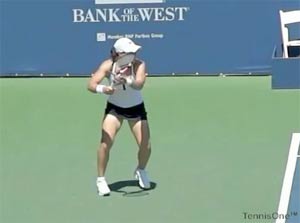
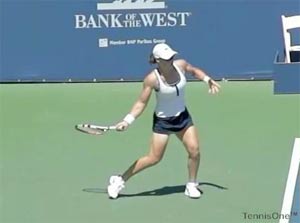
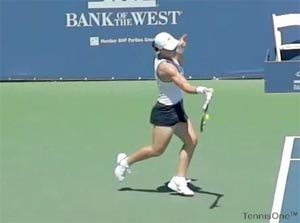
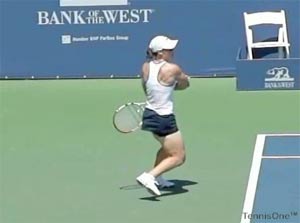
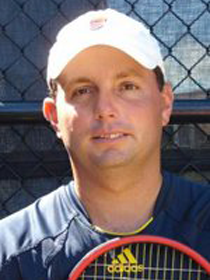 Tom Downs
Tom Downs